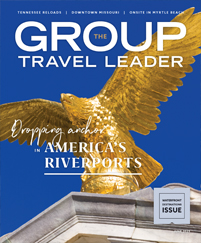Stretched between the Appalachian Mountains and the Atlantic Ocean, the Virginias are rich in both history and beauty. Settled by the British in the 17th century, the area was the first of the original Colonies. As such, it’s not only Civil Rights history visitors will find here — the states also played an integral role in the Civil War.
This itinerary begins at the far eastern tip of West Virginia, where two rivers converge around the idyllic Harpers Ferry. Then, it takes travelers west to our nation’s capital, before heading south with stops in Fredericksburg, Richmond, Farmville and Danville.
Harpers Ferry, West Virginia
Set in a breathtaking West Virginia national park and surrounded on two sides by rivers, Harpers Ferry is a nature lover’s paradise. In between outdoor activities like hiking and biking, visitors can walk around the picturesque 19th century downtown and check out its shops and eateries. Harpers Ferry National Historical Park is saturated in Civil War history. The town, thanks to its position between two rivers and its mountain views of three states, had many strategic advantages during the war. To learn more about the role it played, travelers can visit John Brown’s Fort, where the radical abolitionist attempted an unsuccessful armed revolt against slavery in 1859; this revolt is said to have foreshadowed the impending war. There’s also plenty of other significant historical sites to find on a self-guided tour of the town.
Washington, D.C.
As the nation’s capital, Washington, D.C. possesses an unrivaled collection of historic monuments, nationally recognized landmarks and world-class museums. Highlights include seeing the monuments on the National Mall, catching a production in the city’s exciting theater scene, exploring any of the Smithsonian museums, visiting the Library of Congress and touring government buildings, such as the White House. As a hotspot of U.S. history, it should come as no surprise that there are several Civil Rights Movement sites. These include memorials honoring pivotal figures in the centuries-long battle for racial equality, including the Lincoln Memorial and the Martin Luther King Jr. Memorial. Travelers can also visit the National Museum of African American History and Culture to learn about and appreciate the roots of Black culture.
Fredericksburg, Virginia
Steeped in history dating back to Colonial times, the town of Fredericksburg, Virginia, offers an engaging combination of old and new. From restored 18th century buildings, military parks and Civil War-era cemeteries to craft breweries, art galleries and upscale restaurants, this small town near D.C. has plenty of variety. In addition to Civil War cemeteries and battle sites, it also has a brand-new Fredericksburg Civil Rights Trail, “Freedom, a Work in Progress,” which was created through a partnership between the city and the University of Mary Washington. Stops on the trail include the Fredericksburg Area Museum, the Slave Auction site and the university’s campus, among others. Following the trail to find its 21 stops teaches visitors more about the area’s extensive Civil Rights history.
Richmond, Virginia
Virginia’s capital city has an impressive arts and culture scene, even possessing one of the country’s largest comprehensive art museums, the Virginia Museum of Fine Arts. History buffs will enjoy the city’s collection of Civil War museums and the Virginia Museum of History and Culture. Lewis Ginter Botanical Garden is an oasis of natural beauty. At the state Capitol, travelers can visit a significant Civil Rights Movement site, the Virginia Civil Rights Memorial. The memorial depicts, in a bronze and marble statue, Barbara Johns and other students who walked out of school in protest of segregation. Their cases were later joined with others and brought to the Supreme Court as the landmark Brown v. Board of Education case.
Farmville, Virginia
Home to both Hampden-Sydney College and Longwood University, Farmville, Virginia, is a quaint college town with a storied history. Opportunities for outdoor recreation abound at High Bridge Trail State Park, an 1853 bridge that was damaged during Confederacy’s retreat at the end of the Civil War. Farmville also has plenty of historic buildings, including churches and homes. Another building of significance, Robert Russa Moton High School, was constructed in 1939 to educate Black students. Today, it’s a National Historic Landmark. When two students led a walkout protest at the school, it became a Civil Rights Movement site. It now functions as a museum, with exhibits honoring the fight for the desegregation of and improved access to public education.
Danville, Virginia
On Virginia’s southern border, the small town of Danville was once the Confederacy’s last standing capital. It has plenty of Civil War and Civil Rights era history for history buffs to explore, as well as some newer additions, like breweries, wineries, shops and restaurants. The town’s museums are some of its most popular attractions, including the Danville Science Center and the Danville Museum of Fine Arts and History. Located in the building that once housed the Danville Public Library, the latter museum has a permanent exhibit dedicated to a protest that occurred at the library. In 1960, 16 Black students entered the library to protest its “whites only” policy. They were refused service, and later, both the city’s libraries closed. Today, the museum exhibit includes accounts from the original protestors.











